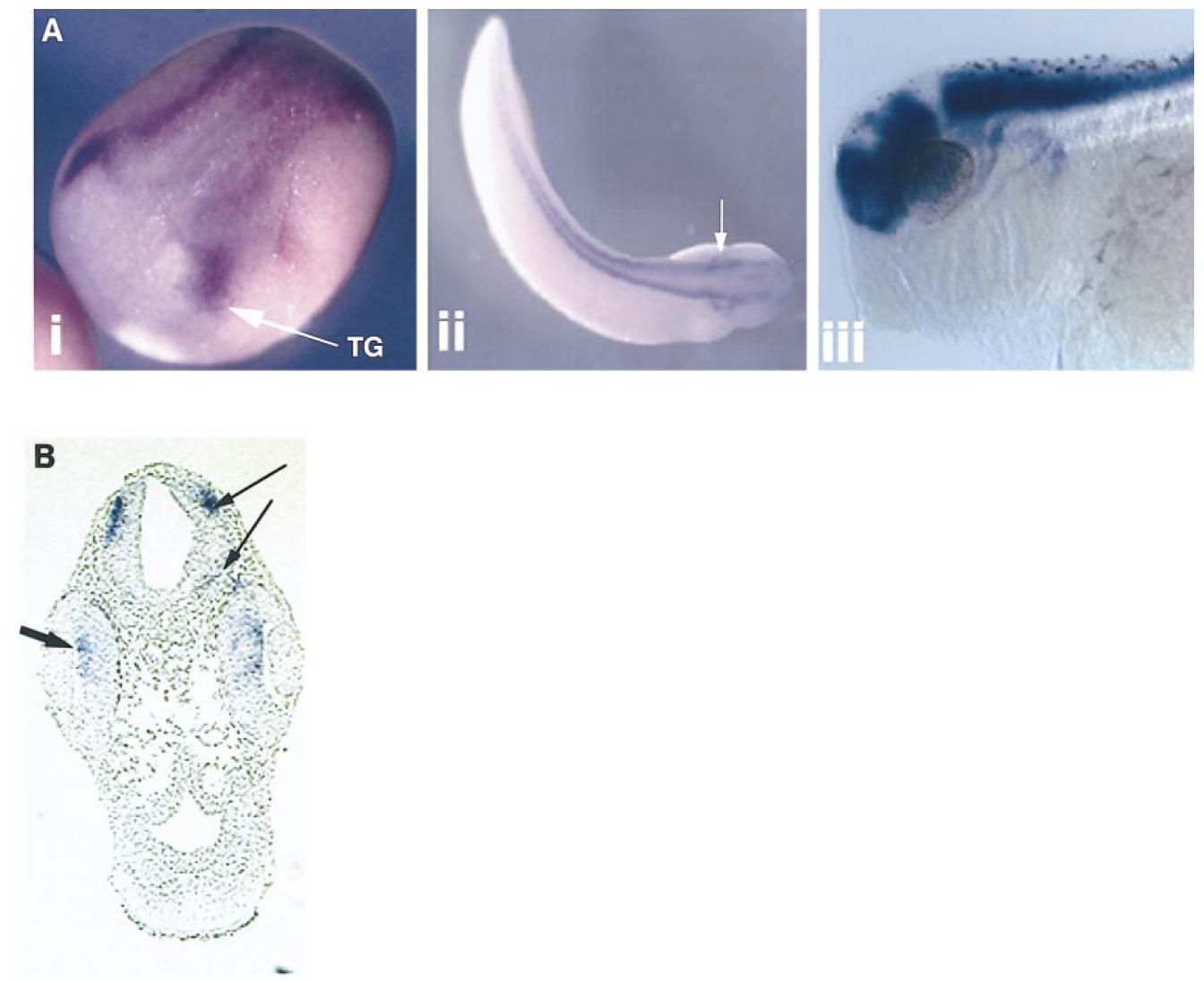XB-IMG-134280
Xenbase Image ID: 134280

|
FIG. 4. Xp35.2 is specifically expressed in differentiating neural tissue. Albino embryos were used for in situ hybridization analysis using
a digoxigenin-labeled Xp35.2 antisense probe, visualized in purple against a white/pink background. Embryonic stages are (Ai) dorsal view
of neural plate stage, (Aii) dorsal view of early tailbud, and (Aiii) lateral view of the head of a late tailbud-staged embryo. Staining of the
trigeminal ganglion (TG) is highlighted with an arrow. (B) A section through the head of a stage 35/36 embryo where Xp35.2 expression has
been detected by whole-mount in situ hybridization and then the embryo has been sectioned. Xp35.2 staining is strong in differentiating
neurons of the forebrain (thick arrow) and ganglion cells of the retina (thin arrows). Image published in: Philpott A et al. (1999) Copyright © 1999. Image reproduced with permission of the Publisher, Elsevier B. V.
Image source: Published Larger Image Printer Friendly View |
